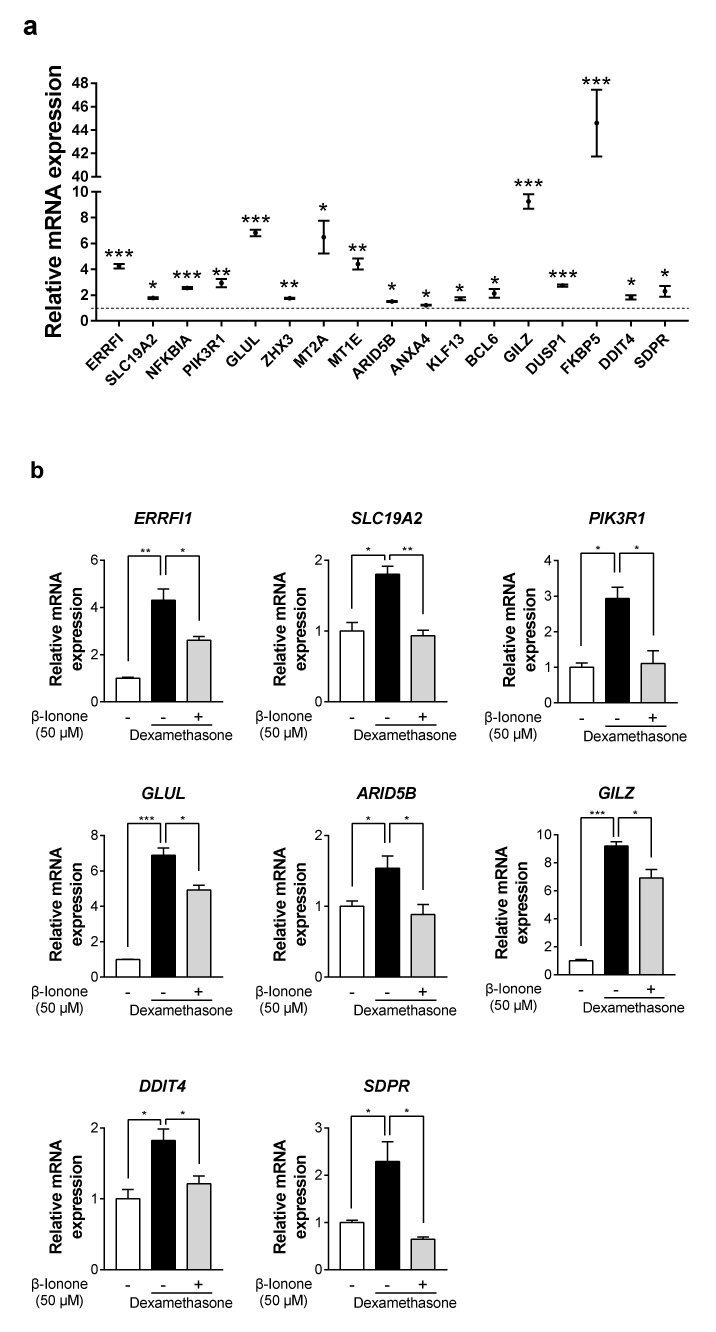Figure 6.
β-ionone suppresses dexamethasone-induced GR target genes in human dermal fibroblasts. Human dermal fibroblasts were treated with either vehicle (shown as “-”) or β-ionone (shown as “+”) as well as dexamethasone for 12 h. Total RNA samples were prepared and analyzed by quantitative RT-PCR. (a,b) The mRNA expression of well-known glucocorticoid-responsive genes (ErbB receptor feedback inhibitor 1, ERRFI1; solute carrier family 19 member 2, SLC19A2; nuclear factor kappa B inhibitor alpha, NFKBIA; phosphoinositide-3-kinase regulatory subunit 1, PIK3R1; glutamate-ammonia ligase, GLUL; zinc fingers and homeoboxes 3, ZHX3; metallothionein 2A, MT2A; metallothionein 1E, MT1E; AT-rich interaction domain 5b, ARID5B; annexin A4. ANXA4; kruppel-like factor 13, KLF13; B-cell lymphoma 6, BCL6; glucocorticoid-induced leucine zipper, GILZ; dual specificity phosphatase 1, DUSP1; FK506 binding protein 5, FKBP5; DNA damage inducible transcript 4, DDIT4; and serum deprivation-response protein, SDPR) was evaluated. Values are shown as mean ± standard error of the mean (SEM) of three experiments. Statistical significance is expressed as follows: * p < 0.05, ** p < 0.01, *** p < 0.001.

